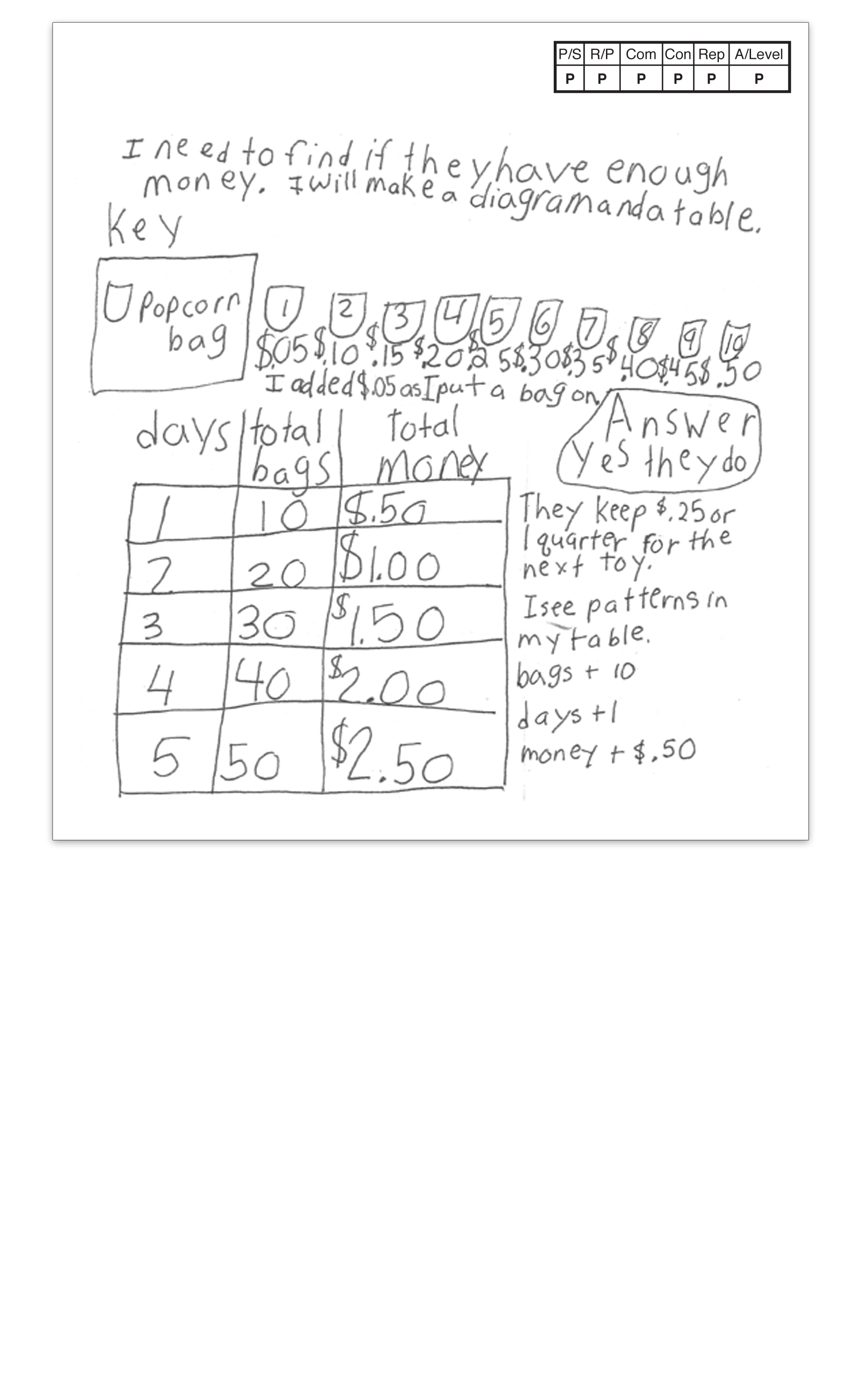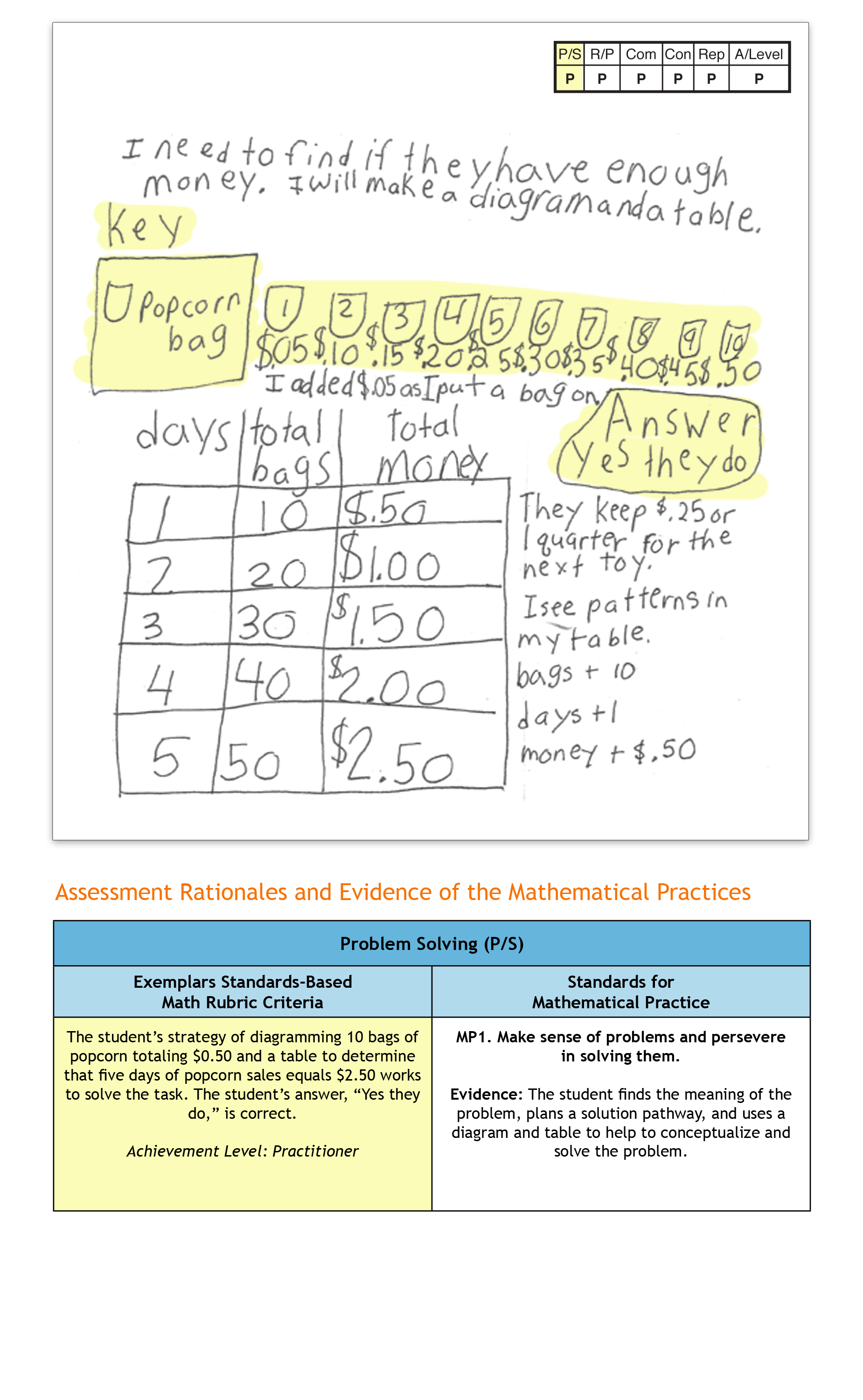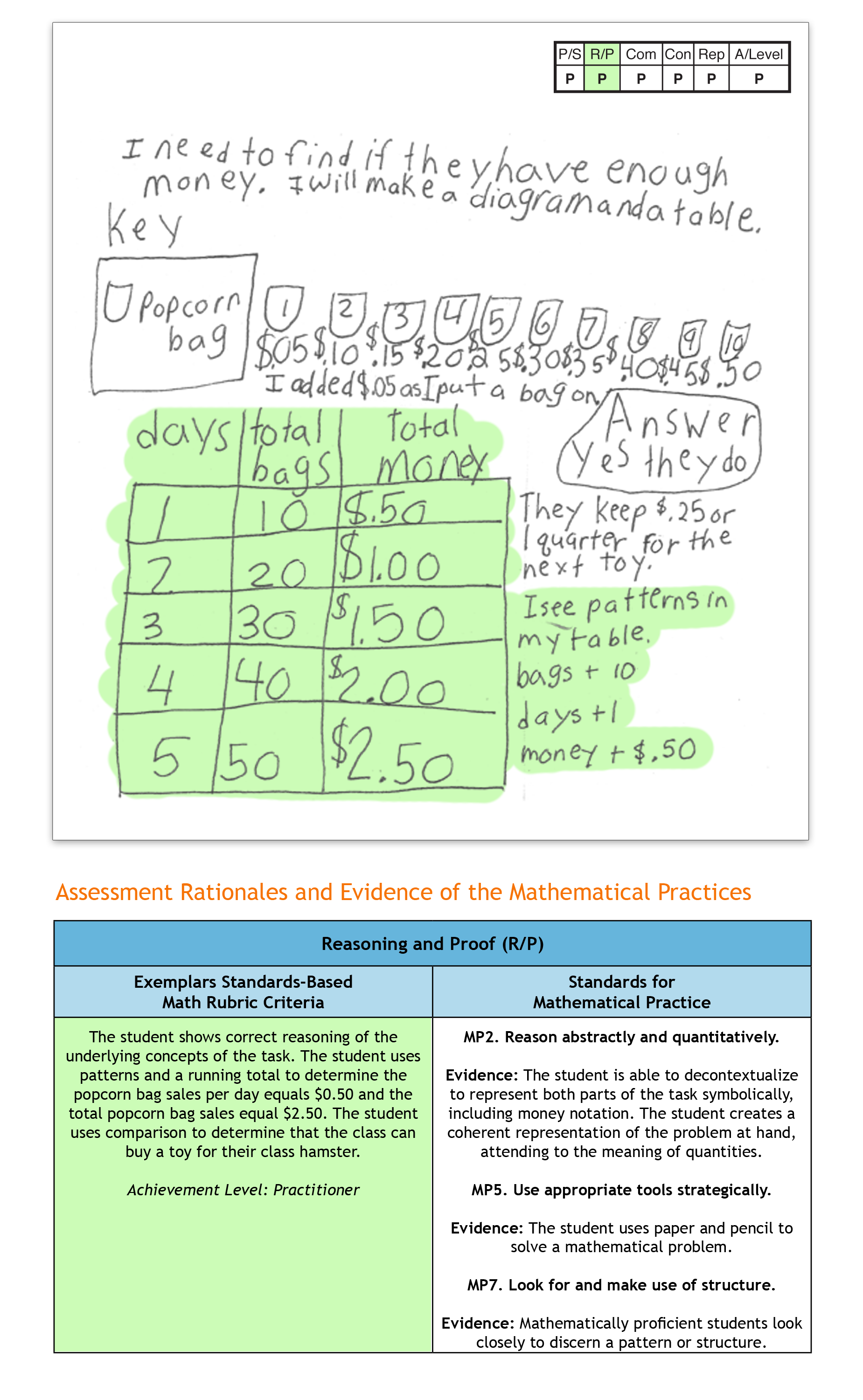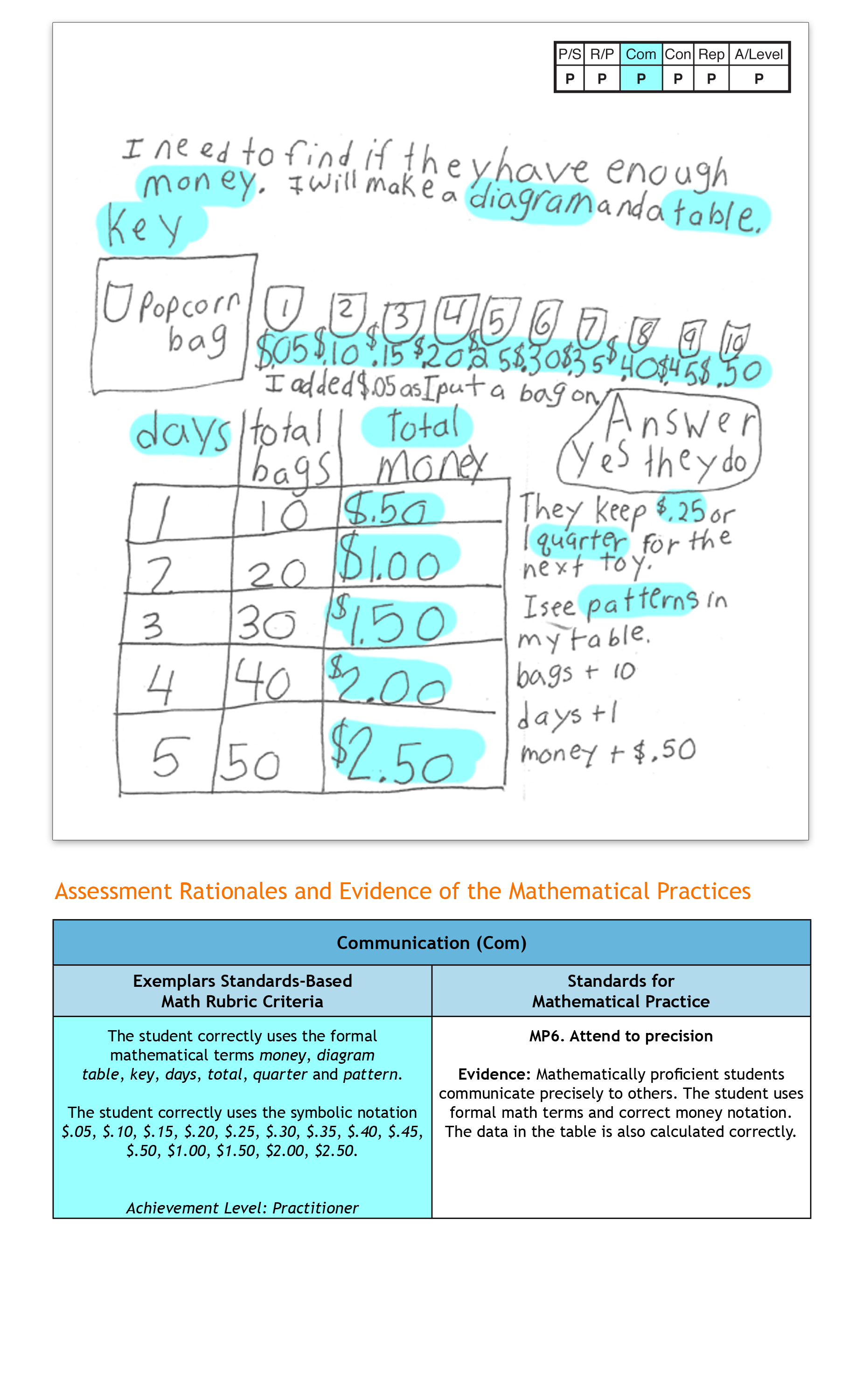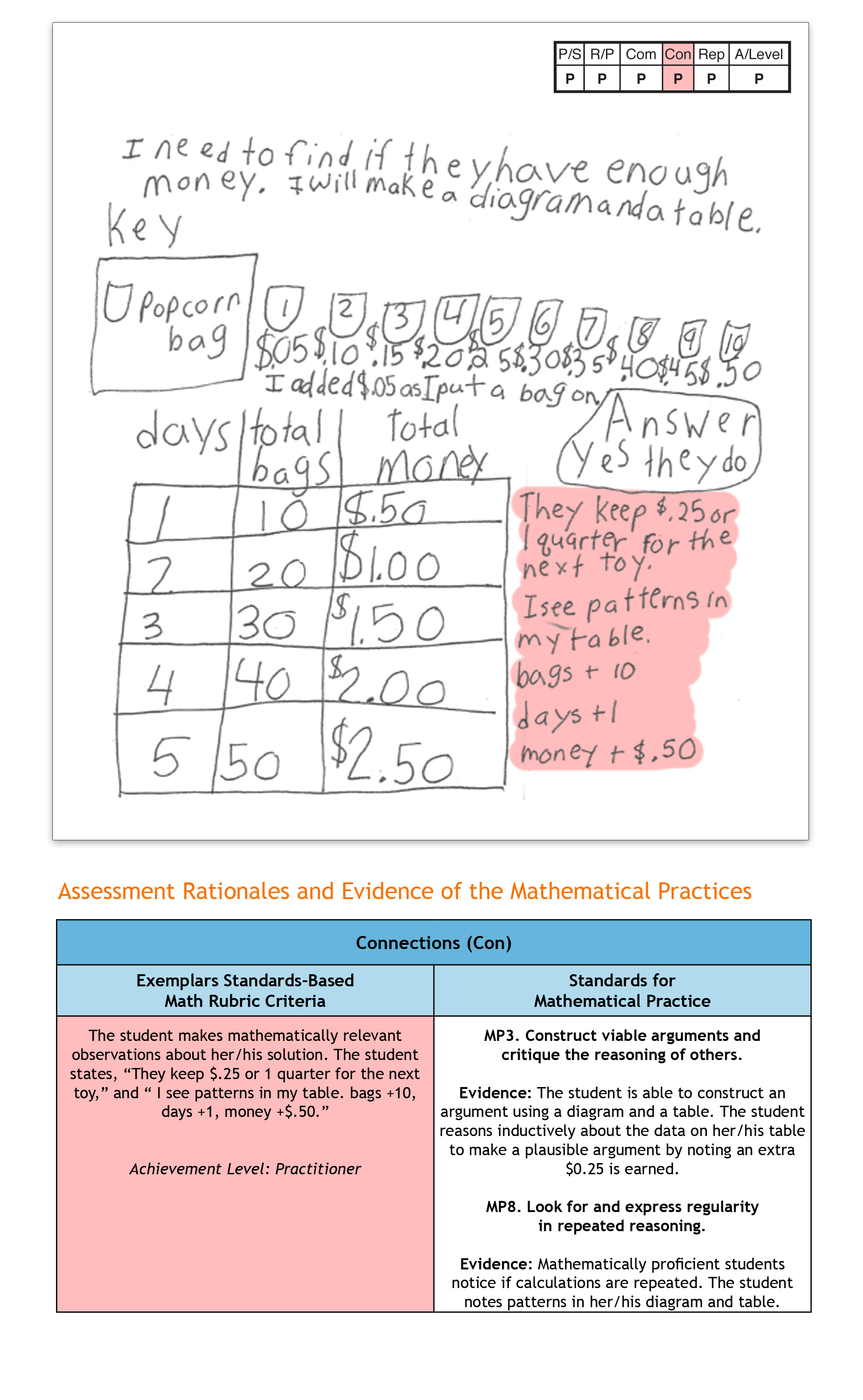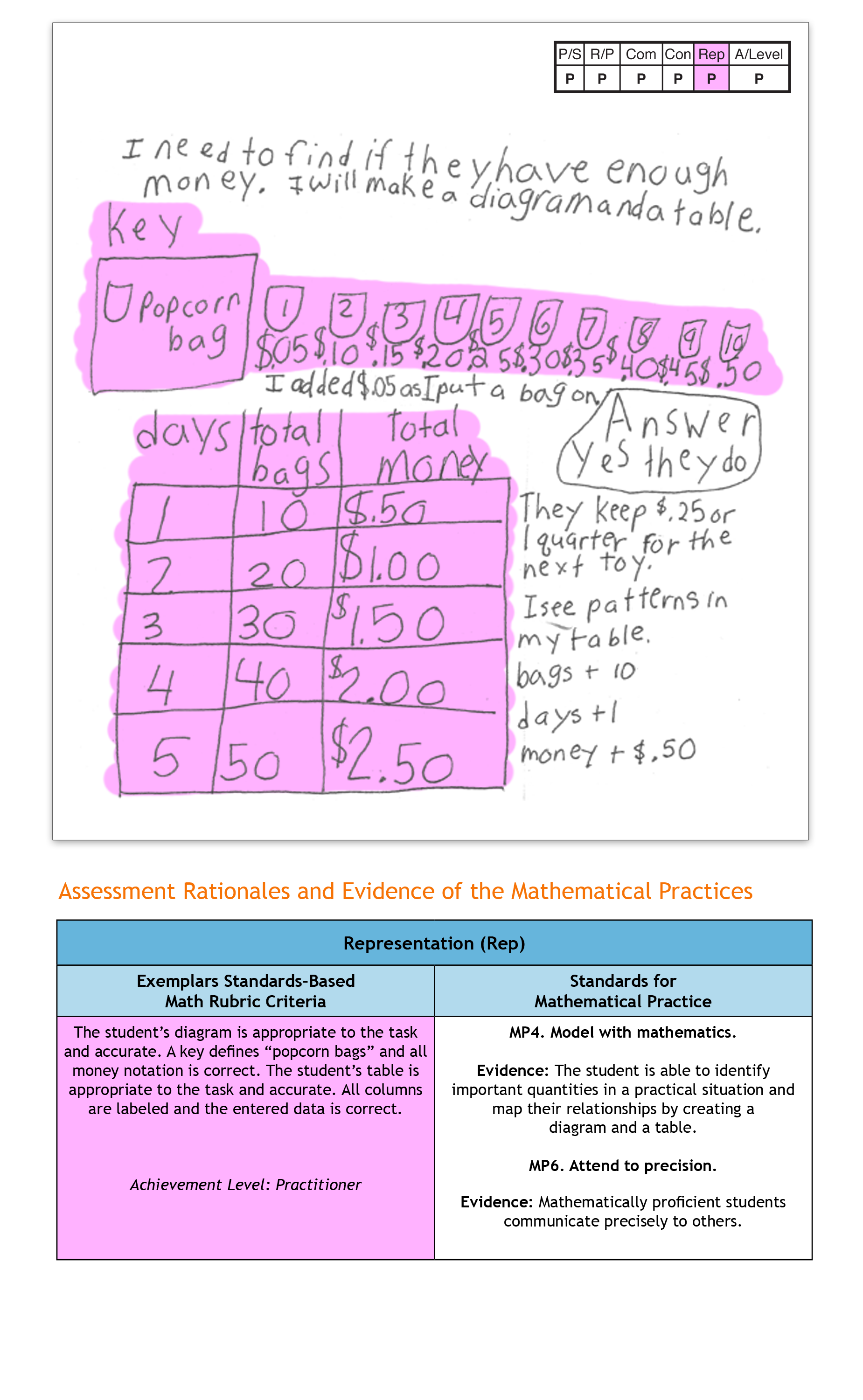Supporting the Standards for Mathematical Practice With Exemplars Performance Tasks and Rubric at the Second Grade Level
Written By: Deborah Armitage, M.Ed., Exemplars Math Consultant
Summer Blog Series Overview:
Exemplars performance-based material is a supplemental resource that provides teachers with an effective way to implement the Common Core through problem solving. This blog represents Part 3 of a six-part series that features a problem-solving task linked to a CCSS for Mathematical Content and a student’s solution in grades K–5. Evidence of all eight CCSS for Mathematical Practice will be exhibited by the end of the series.
The Exemplars Standards-Based Math Rubric allows teachers to examine student work against a set of analytic criteria that consists of the following categories: Problem Solving, Reasoning and Proof, Communication, Connections and Representation. There are four performance/achievement levels: Novice, Apprentice, Practitioner (meets the standard) and Expert. The Novice and Apprentice levels support a student’s progress toward being able to apply the criteria of a Practitioner and Expert. It is at these higher levels of achievement where support for the Mathematical Practices is found.
Exemplars problem-solving tasks provide students with an opportunity to apply their conceptual understanding of standards, mathematical processes and skills. Observing student anchor papers with assessment rationales that demonstrate the alignment between the Exemplars assessment rubric and the CCSS for Mathematical Content and Mathematical Practice can be insightful for educators. Anchor papers and assessment rationales provide examples of what to look for in your own students’ work. Examples of Exemplars rubric criteria and the Mathematical Practices are embedded in the assessment rationales at the bottom of the page. The full version of our rubric may be accessed here. It is often helpful to have this in hand while reviewing a piece of student work.
Blog 3: Observations at the Second Grade Level
The third anchor paper and set of assessment rationales we’ll review in this series is taken from a second grade student’s solution for the task, “A New Hamster Toy.” This is one of a number of Exemplars tasks aligned to the Measurement and Data Standard 2.MD.8.
“A New Hamster Toy” would be used toward the end of the learning time allocated to this standard. This task provides second grade students with an opportunity to apply different strategies to determine if there is enough money to buy a hamster toy for $2.25. The task does not provide the symbolic notation for $2.25, $0.05, or 5¢. Students need to bring this understanding to their solutions, which provides the teacher with an opportunity to assess if they can correctly notate money. This task also provides students with the opportunity to use comparison and to solve a problem that includes two steps. Students need to determine the popcorn bag sales for one day, determine the total sales for five days and compare that total to $2.25.
When forming their solutions, students have a variety of strategies to consider. Some examples include using actual money to model the bag sales and total bag sales, diagramming the bags and/or money earned, creating a table to indicate popcorn sales for one or five days, using a printed number line, creating a number line or a tally chart.
Second Grade Task: A New Hamster Toy
Some students want to earn two dollars and twenty-five cents to buy a toy for their class hamster. The students decide to sell small bags of popcorn at snack time for five cents each. The students sell ten bags every day for five days. Do the students earn enough money to buy a toy for their class hamster? Show all your mathematical thinking.
Common Core Alignments
- Content Standard 2.MD.8: Solve word problems involving dollar bills, quarters, dimes, nickels, and pennies, using $ and ¢ symbols appropriately.
- Mathematical Practices: MP1, MP2, MP3, MP4, MP5, MP6, MP7, MP8


